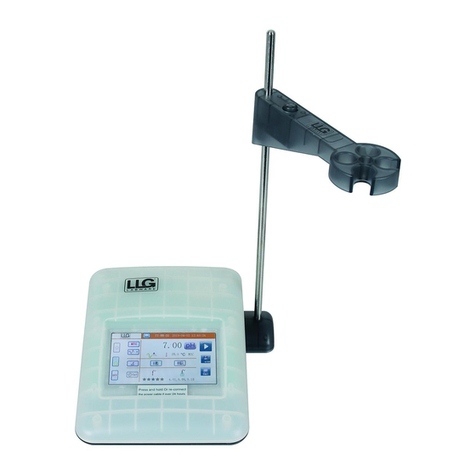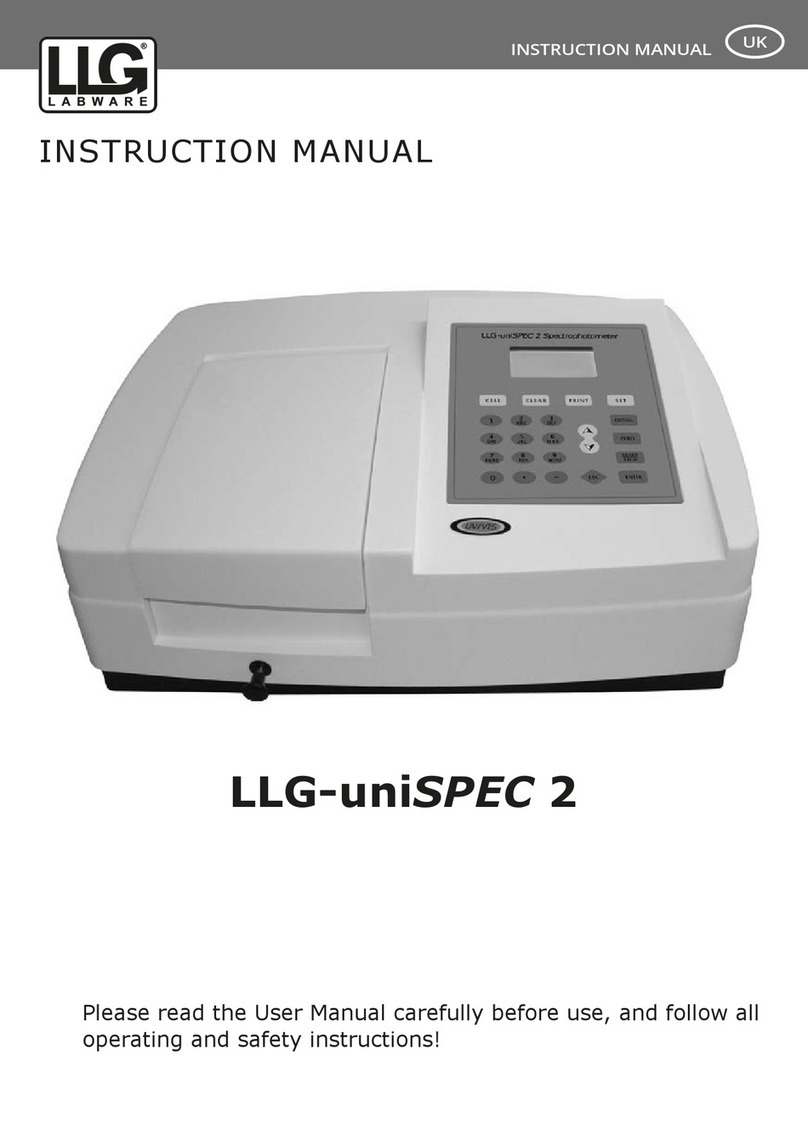
6
Different matter has different but special absorbance wavelength point. Also, when at
the xed wavelength point, the absorbance has some relation to the substance’s (Always
transparent Solution) concentration and its thickness. The relation can be concluded as the
following Formula, which is called Lambert-Beer Law.
T= I/Io
A=KCL= -log I/Io
A Absorbance
C Concentration of the Solution
K Absorbance Coefcient of the Solution
L The length of the Solution in the light path
I The intensity of the light focused on the A/D after it permeate the solution to be
measured.
Io The intensity of the light focused on the A/D after it permeate the Solution.
Note: When the test is running, the solvent is usually taken as the Reference Solution and its
Transmittance is considered as 100%T. While the Transmittance of the sample to be tested is
a relative value which is going to be compared to that of the Reference.
The spectrophotometer consists of ve parts:
1) Halogen or deuterium lamps to supply the light;
2) A monochromator to isolate the wavelength of interest and eliminate the unwanted
second order radiation;
3) A sample compartment to accommodate the sample solution;
4) Detector to receive the transmitted light and convert it to an electrical signal; and
5) A digital display to indicate absorbance or transmittance. The block diagram (Fig 2.4)
below illustrates the relationship between these parts.
In your spectrophotometer, light from the lamp is focused on the entrance slit of the
monochromator where the collimating mirror directs the beam onto the grating. The grating
disperses the light beam to produce the spectrum, a portion of which is focused on the exit
slit of the monochromator by a collimating mirror. From here the beam is passed to a sample
compartment through one of the lters, which helps to eliminate unwanted second order
radiation from the diffraction grating. Upon leaving the sample compartment, the beam is
passed to the silicon photodiode detector and causes the detector to produce an electrical
signal that is displayed on the digital display.
2.2 Working Principle
2.3 Structure
Light
Scource
Monochromator DetectorSample
Compartment
Process and
Display
Fig 2.4 Block diagram for the Spectrophotometer






























